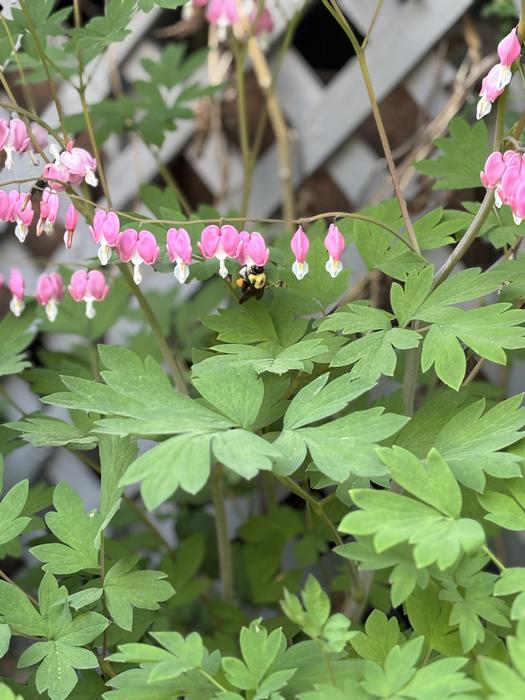A groundbreaking study conducted by researchers at the University of Minnesota has provided critical insights into the dynamics of viral transmission between managed Western honey bees (Apis mellifera) and native bumblebee populations, particularly Bombus griseocollis. This extensive observational research, spanning three years and involving genomic sequencing of viral pathogens, reveals that while viral spillover occurs from honey bees to bumblebees, it does not result in the emergence of novel viral variants capable of establishing themselves in native bumblebee populations.
The threat of viral spillover from managed pollinators to wild bee species has long been a concern in ecology and conservation biology, especially given the global decline in pollinator populations. Viruses such as the deformed wing virus (DWV), black queen cell virus (BQCV), and sacbrood virus (SBV) have been closely monitored due to their known impacts on honey bee health. These pathogens have significant implications for agricultural ecosystems, given the pivotal role honey bees play in crop pollination. This study meticulously evaluated whether these viruses diversify genetically upon infecting bumblebees, potentially amplifying danger through adaptability and host shifts.
Using state-of-the-art genomic sequencing techniques, the research team systematically sampled honey bee colonies and local bumblebee populations across multiple seasons to assess viral presence and genetic makeup. Their findings demonstrated that although the viruses were present in native bumblebees, the viral genomes remained over 98% identical to those found in honey bees. This high genetic similarity indicates a lack of host-specific mutational changes or viral evolution within bumblebee hosts, suggesting that the viruses do not replicate or adapt effectively in these native species.
.adsslot_lE9y4x60eA{width:728px !important;height:90px !important;}
@media(max-width:1199px){ .adsslot_lE9y4x60eA{width:468px !important;height:60px !important;}
}
@media(max-width:767px){ .adsslot_lE9y4x60eA{width:320px !important;height:50px !important;}
}
ADVERTISEMENT
Furthermore, the absence of bumblebee-specific viral variants strongly suggests that viral replication cycles do not perpetuate within bumblebee populations, classifying such spillover events as epidemiological dead ends. In other words, while bumblebees can become transient carriers of honey bee viruses, they do not act as reservoirs that enable further transmission among conspecifics. This observation challenges earlier hypotheses that viral spillover might lead to widespread disease outbreaks among wild bee species, assuaging some concerns about managed honey bee colonies inadvertently driving pathogen epidemics in native pollinators.
Interestingly, the study’s in-depth virome analysis of bumblebees also uncovered a distinct array of viruses unique to these native species, separate from honey bee-associated pathogens. This finding highlights a complex viral ecology within wild pollinator communities and emphasizes the importance of understanding the native virome landscape to better contextualize disease risks. The protective factors underlying bumblebees’ resistance to viral diversification remain an important area for future research, potentially including innate immune defenses, microbial symbionts, or environmental factors limiting viral replication.
The implications of this research extend beyond viral genetics to broader pollinator conservation efforts. Bee populations worldwide face unprecedented challenges from habitat degradation, pesticide exposure, climate fluctuations, and invasive species. Pathogen spillover adds an additional pressure point, raising concerns about biodiversity loss and the sustainability of pollination services crucial for global food security. This study, by clarifying the limited evolutionary risk posed by viral spillover, offers a more nuanced framework for managing honey bee colonies alongside conservation of native bees.
Professor Declan Schroeder, lead investigator and a prominent figure in veterinary medicine, emphasizes that while viral spillover does occur, current evidence does not support drastic restrictions on beekeeping practices in areas inhabited by wild bumblebees. Instead, maintaining vigilance through continuous monitoring and safeguarding habitats remains paramount. This approach balances agricultural interests with ecological stewardship by minimizing unnecessary alarm while promoting data-driven conservation strategies.
Conservationists must nonetheless recognize that bee species with low genetic diversity, often those under threat of extinction, may be more vulnerable to any disease pressure, including pathogen spillover. Protective interventions for such species remain critical components of biodiversity management. Ensuring genetic variability and ecosystem resilience can mitigate potential viral impacts that may not yet be fully understood.
Elaine Evans, a co-author and extension professor at the College of Food, Agricultural and Natural Resource Sciences, advocates for ongoing research into the health consequences of viral spillover on wild bees. She warns that the absence of viral adaptation does not equate to an absence of risk; sublethal effects on bee fitness and behavior could still influence population dynamics. Expanding surveillance efforts to capture the complexity of multi-host pathogen interactions is essential in this context.
The study was supported by the Environment and Natural Resources Trust Fund, indicating the importance of government-backed funding for foundational research in environmental health. Additionally, community contributions, including support from the Minnesota Saint Paul Airport, facilitated the practical aspects of beekeeping and sample collection through the UMN Bee Squad Program, underscoring the value of public-private partnerships in advancing pollinator science.
Overall, this landmark research represents a significant advance in understanding viral ecology in pollinators, merging veterinary science, molecular biology, and conservation to inform policy and practice. As the global community grapples with pollinator decline, these findings offer cautious optimism that managed honey bee practices, when informed by rigorous science, need not exacerbate viral threats to wild bee populations.
Continued interdisciplinary research, incorporating genomics, field ecology, and epidemiology, will be critical to unraveling further complexities in bee-virus interactions. Such knowledge is vital for developing predictive models and intervention strategies aimed at preserving both agricultural productivity and natural biodiversity in an era of rapid environmental change.
Subject of Research: Animals
Article Title: Distinct virome compositions and lack of viral diversification indicate that viral spillover is a dead-end between the western honey bee and the common eastern bumblebee
News Publication Date: 16-Jun-2025
Web References: https://www.nature.com/articles/s42003-025-08351-x
References: DOI 10.1038/s42003-025-08351-x
Image Credits: Ancilla Schroeder
Keywords: Bees, Viral spillover, Pollinators, Deformed wing virus, Black queen cell virus, Sacbrood virus, Western honey bee, Bumblebee, Viral genetics, Genomic sequencing, Viral ecology, Conservation
Tags: bee virus transmissionblack queen cell virus and agriculturebumblebee population dynamicsdeformed wing virus impact on beesecological implications of bee virusesgenomic sequencing of bee viruseshoney bee health and conservationhoney bees and crop pollinationnative bumblebee virus resiliencepollinator population decline researchsacbrood virus in managed beesviral spillover effects on pollinators





